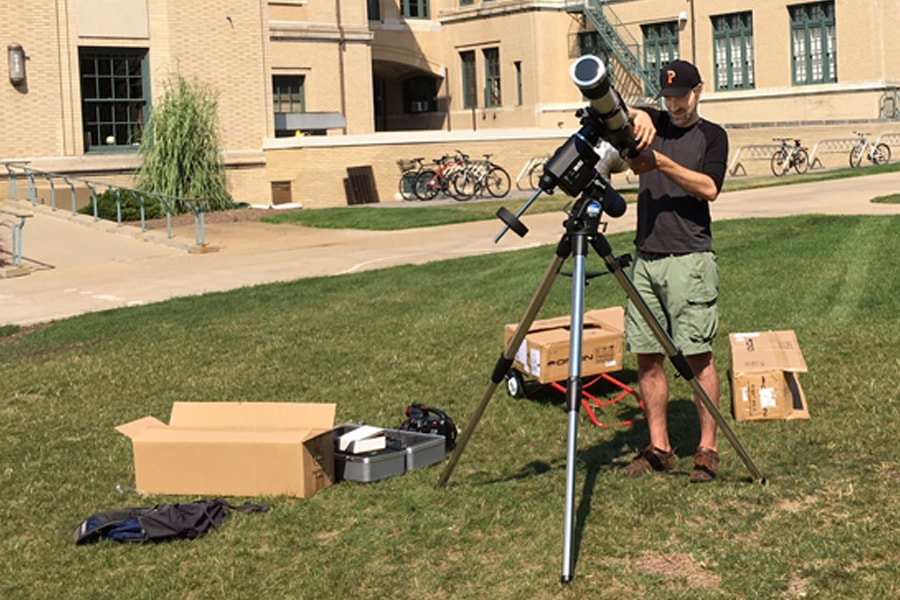
CMU's Walker To Shine Light on Famous Experiment During Eclipse
For the first time in nearly a century, a solar eclipse will be visible across the entire United States.
The total solar eclipse provides a unique opportunity for North American scientists. Matthew Walker, assistant professor of physics at Carnegie Mellon University, will travel to Nashville, Tennessee, to view the eclipse and attempt to repeat a famous experiment. First completed in 1919 by Arthur Eddington, the Eddington Experiment proved Einstein's theory of general relativity.
"Eddington's experiment was revolutionary," Walker said. "I'm thrilled to be able to try to reproduce it as a celebration of an event that altered our understanding of the universe."
In his theory of general relativity, Einstein predicted that massive objects, like the sun, cause the space around them to curve, naturally bending the paths of anything that travels near those objects. One consequence is the light from distant stars will be deflected slightly when it passes near the sun on its journey to Earth. Einstein's theory said the light would be bent almost two-fold more than Newtonian gravity — the prevailing theory at the time — did. Since stars close to the sun are not visible during daylight, the 1919 eclipse was the first time the phenomenon could be measured, and Einstein's theory was proven correct.
For Walker's expedition, supported by the Mellon College of Science, he will use a portable wide field telescope to image the sun for the two minutes of totality — when the moon entirely eclipses the sun. In his images, he should be able to measure how the light from nearby stars is bent by the sun's gravitational field.
Walker plans to use the images he takes during the eclipse in his Introduction to Astrophysics class this fall.
"This is an educational experiment; we're not going to make any new scientific discoveries. That was done almost 100 years ago," Walker said. "It's a great way to gather real astronomical data to use in the classroom."
Astronomical images are the cornerstone of cosmology research. Researchers take measurements from these images to learn about the universe's origins and expansion, how galaxies are formed and about the nature of dark matter and dark energy. Walker will incorporate the eclipse images into the lab section of his class to teach students about image processing, source finding and statistical analysis.
Walker is one of about a dozen North American scientists trying to recreate this experiment in different locations in the eclipse's path.
Carnegie Mellon's Pittsburgh campus is not in the path of totality, but if the weather cooperates, those on campus will have the chance to view a partial eclipse. The CMU Astronomy Club will have telescopes with solar filters and eclipse glasses available for viewing the eclipse in a tent on campus, beginning at noon on Monday, Aug. 21. Eclipse glasses are on a first-come, first-served basis.